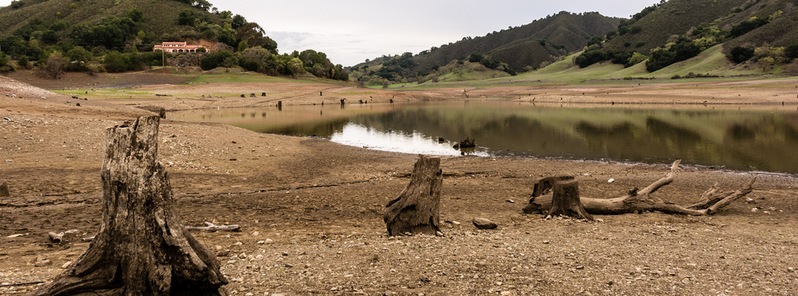California land mass sinking at record rate as farmers desperately drill new wells to use up ground water

The days of abundant water are a distant memory for farmers in California. For the Central Valley, the wells are about to run dry.
California's Central Valley is now reportedly sinking at a rate never seen during the state's historic drought, and farmers are shouldering part of the blame as they continue to pump the land dry in an effort to keep their businesses afloat.
Steve Arthur of Arthur & Orum Well Drilling is drilling wells as fast as his rig will allow him. The demand has been insatiable, and waiting lists as long as 18 months have developed during the state's drought. Some farmers are willing to pay two or three times the price of a regular well by contracting people out of state. This clearly illustrates the desperation of the current water situation as farmers become willing to do almost anything to tap into an available water supply.
In fact, farmers are paying $300 per foot to reach groundwater, and some wells are going 3,000 feet down as all of the good water is being used up faster than Mother Nature can replenish it.
This exploitation of the California water supplies has caused a significant dropping of their landmass, which threatens expensive infrastructure that can easily break in the event of land collapse, such as roads, railways, canals and pipelines. Fingers are being pointed at farmers, particularly in the nut industry, as they struggle to feed their crops and sustain their businesses.
Drought conditions remain extreme
As of April 21, 2015, 93 percent of the state of California is considered in severe drought, according to The National Drought Mitigation Center. Over 66 percent is experiencing extreme drought conditions, and over 46 percent is considered to be in an exceptional drought. During this time, California farmers have siphoned unprecedented amounts of water out of the state's underground aquifers, also called "fossil water", and it can take centuries to regenerate this water.
These desperate actions have set California up with a 50 percent chance of suffering a "megadrought" that could last 35 years. One scientist was quoted as saying, "This will be worse than anything seen during the last 2,000 years and would pose unprecedented challenges to water resources in the region."
In light of these scary statistics, California Governor Jerry Brown has sounded the alarm over the historic drought and is calling for unprecedented actions to help solve the crisis. Immediate solutions will see 50 million square feet of lawns replaced with drought-resistant plants, restaurants offering drinking water only on demand, and even the possibility of golf courses letting their lush greens go brown.
However, these water-saving measures won't solve an issue of this size. As a result, conversations have turned to diversifying the state's water resources and considering projects that offer more sustainability to California's water supply. These projects include piping in water from out of state and expanding on technologies that convert waste water or saltwater into clean water that can be used for industrial, agricultural or even drinking purposes.
Whatever the state decides to do to put a stop to the California water crisis, it needs to act quickly. With the recent dry stretch now entering its fourth year and showing no signs of ending soon, inaction could devastate the state through ruined land infrastructure, exorbitant food prices and forced migration. This means this historical drought could not only sink the landmass, but it could also sink the economy.
It's time to put on your thinking caps, Californians. The future of your state depends on it.
Sources:
http://sanfrancisco.cbslocal.com
http://www.naturalnews.com
http://sanfrancisco.cbslocal.com
Written by P.A. Watson (Natural News)
Featured image: Effect of the drought on Uvas reservoir by Don DeBold. Photo taken from a location that should be under water. Santa Clara, California.

That’s it CA, your done. There is no way that smaller states can produce enough water to feed the beast that is California. Things must change to accommodate how much water is left. That is, population reduction and the majority of agriculture must go. Let this be a lesson to the rest of us.
8 thousand years ago the sahara was a green land with a large human and animal population, then an ocean current in the atlantic changed course for an unknown reason and the desert that we know now took over. Could the same thing have happened in the pacific?